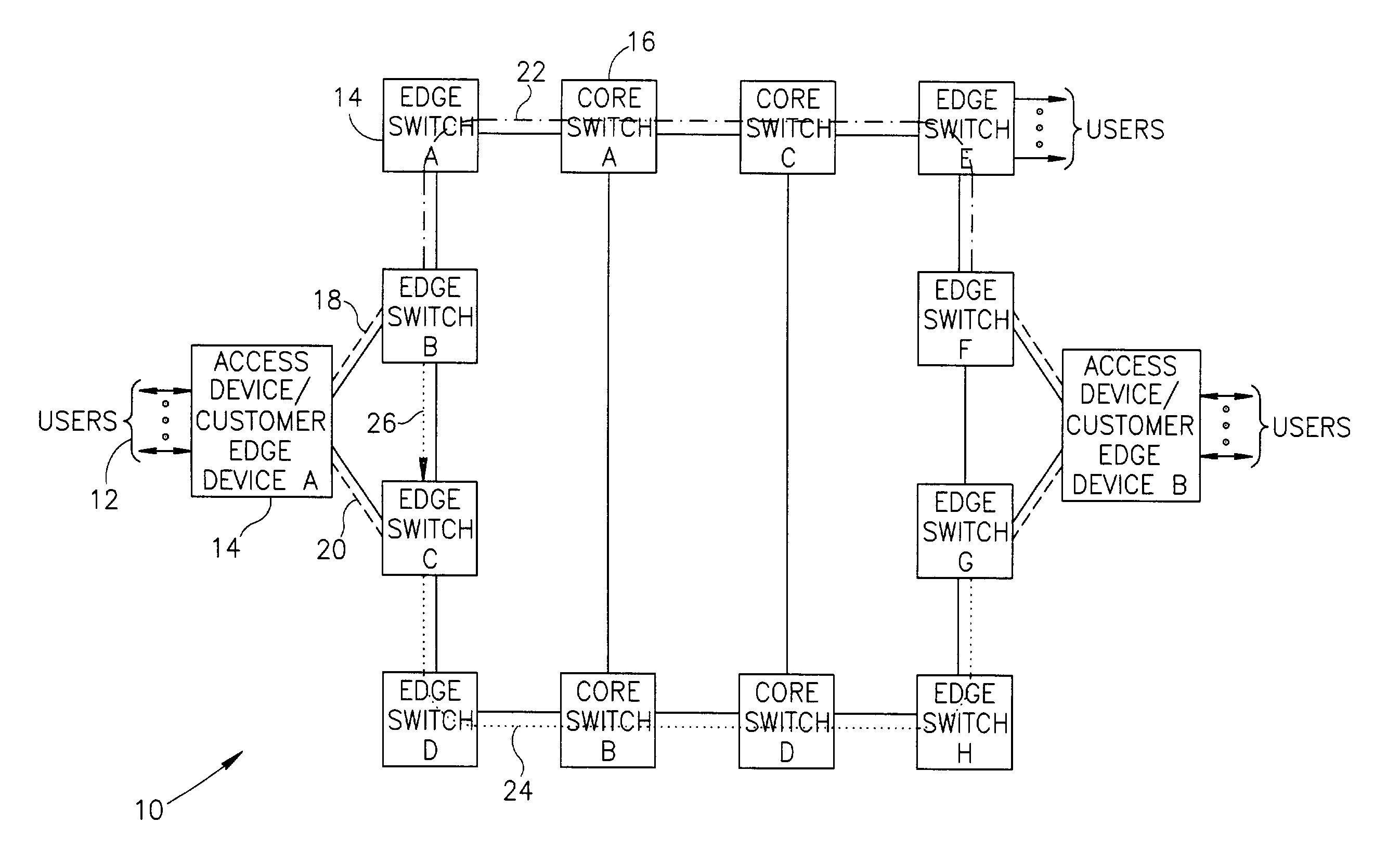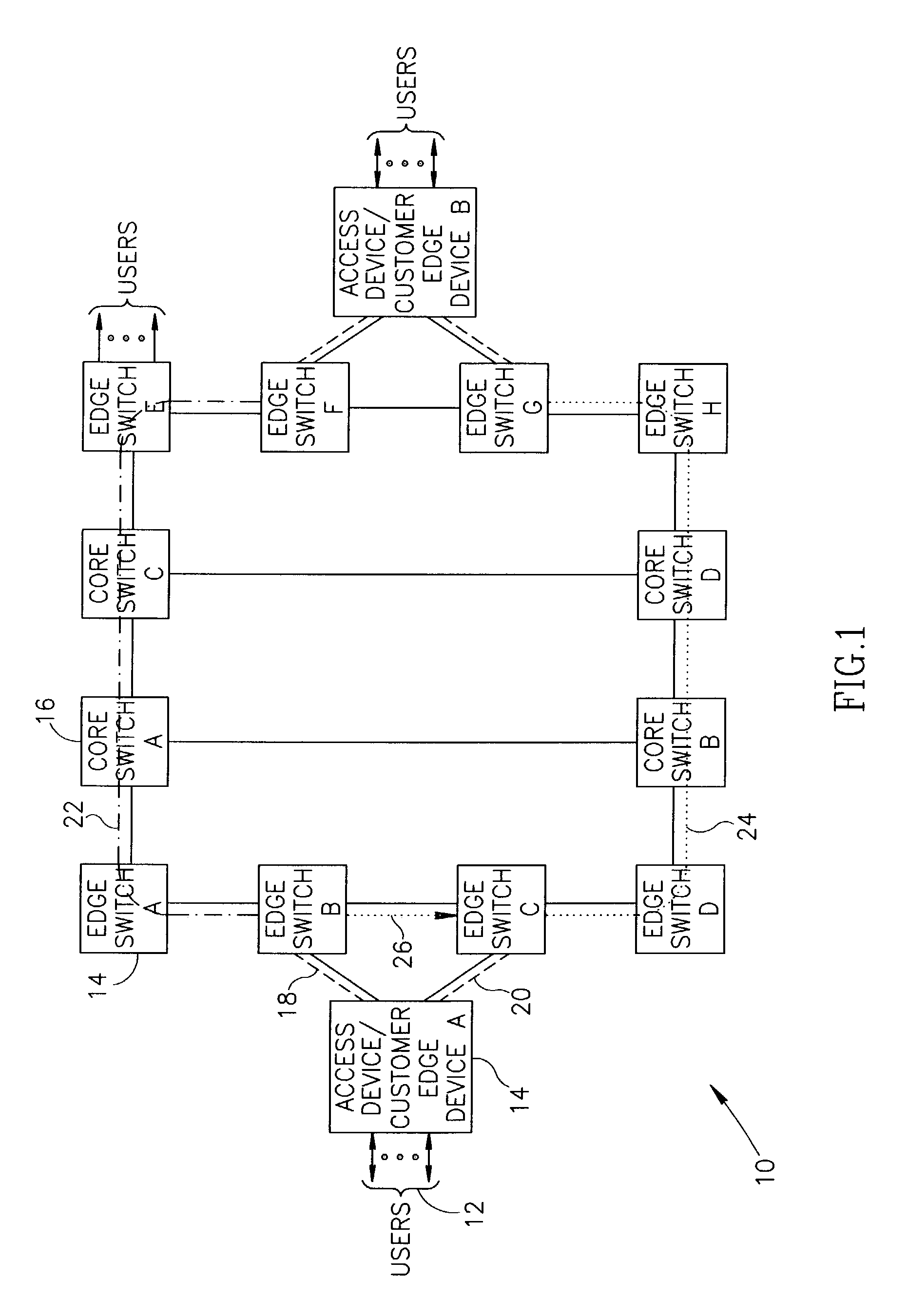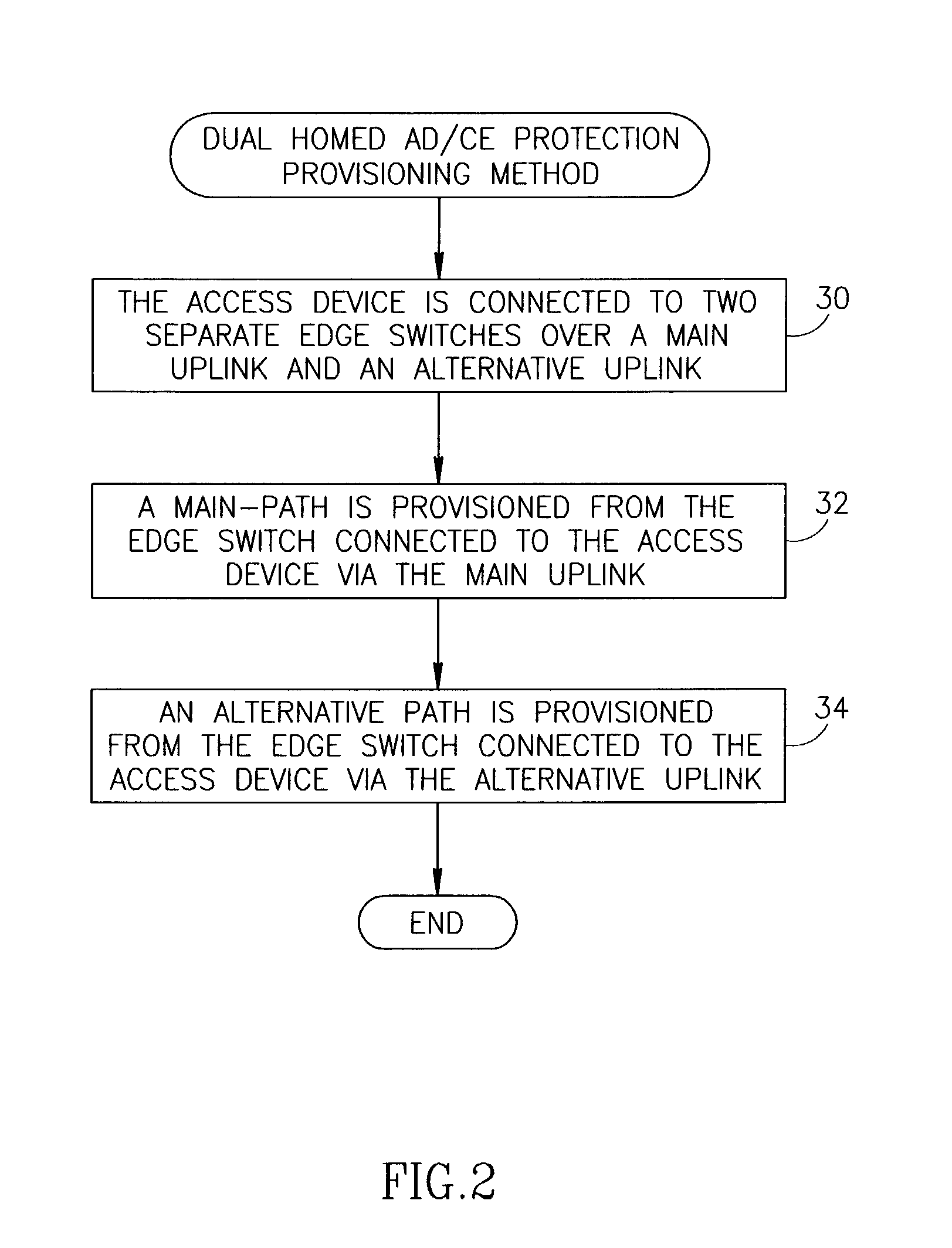Connection protection mechanism for dual homed access, aggregation and customer edge devices
a protection mechanism and connection protection technology, applied in the field of data communication, can solve the problems of inability to design traffic engineered networks, devices without the capability of per connection end-to-end or local protection, and off-the-shelf conventional access devices do not have protection capabilities, etc., and achieve the effect of increasing reliability
- Summary
- Abstract
- Description
- Claims
- Application Information
AI Technical Summary
Benefits of technology
Problems solved by technology
Method used
Image
Examples
Embodiment Construction
Notation Used Throughout
[0059]The following notation is used throughout this document.
[0060]
TermDefinitionADAccess DeviceASICApplication Specific Integrated CircuitATMAsynchronous Transfer ModeCD-ROMCompact Disc-Read Only MemoryCECustomer EquipmentCPUCentral Processing UnitCR-LDPConstraint-based Label Distribution ProtocolCSCore SwitchCSIXCommon Switch InterfaceDATDigital Audio TapeDSPDigital Signal ProcessorDVDDigital Versatile DiskEEPROMElectrically Erasable Programmable Read Only MemoryEIRExcess Information RateEPROMErasable Programmable Read Only MemoryESEdge SwitchFDDIFiber Distributed Data InterfaceFEFast EthernetFPGAField Programmable Gate ArrayGEGigabit EthernetIETFInternet Engineering Task ForceIPInternet ProtocolISISIntermediate System to Intermediate SystemITUInternational Telecommunications UnionLACPLink Aggregation Control ProtocolLAGLink Aggregation GroupLANLocal Area NetworkLSBLeast Significant BitLSPLabel Switched PathLSRLabel Switching RouterMACMedia Access ControlM...
PUM
 Login to View More
Login to View More Abstract
Description
Claims
Application Information
 Login to View More
Login to View More - R&D
- Intellectual Property
- Life Sciences
- Materials
- Tech Scout
- Unparalleled Data Quality
- Higher Quality Content
- 60% Fewer Hallucinations
Browse by: Latest US Patents, China's latest patents, Technical Efficacy Thesaurus, Application Domain, Technology Topic, Popular Technical Reports.
© 2025 PatSnap. All rights reserved.Legal|Privacy policy|Modern Slavery Act Transparency Statement|Sitemap|About US| Contact US: help@patsnap.com



